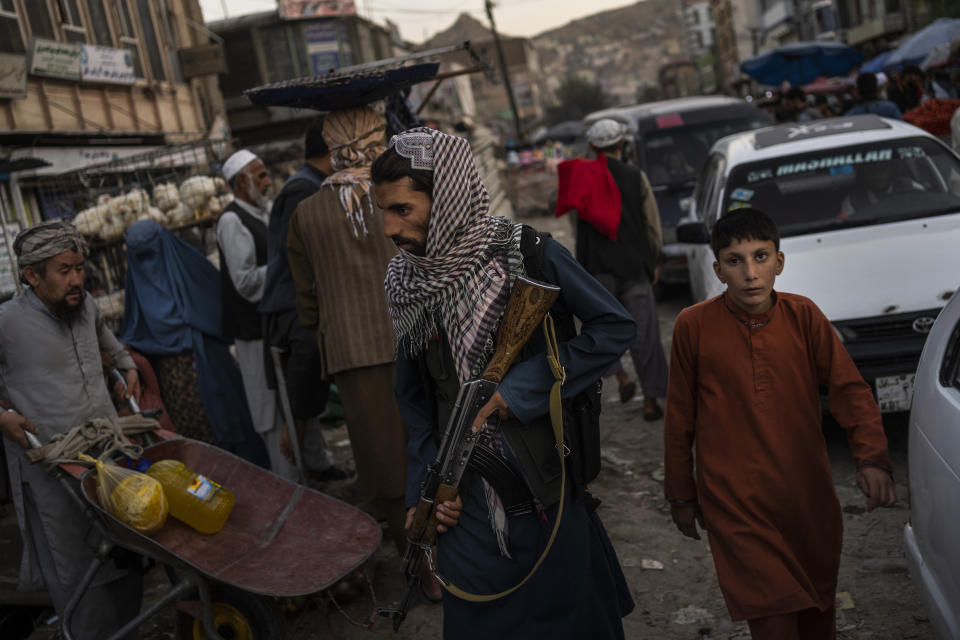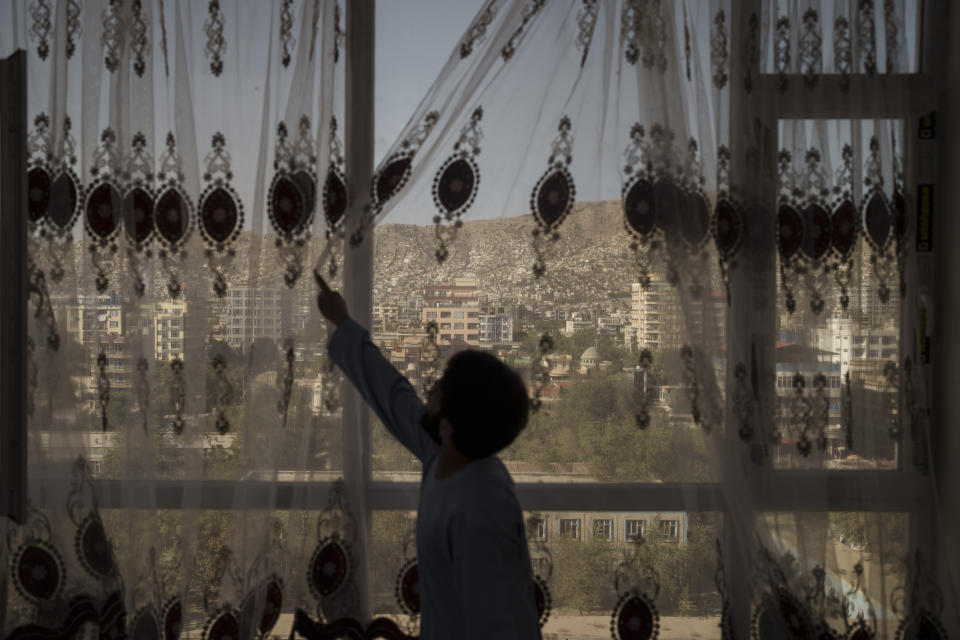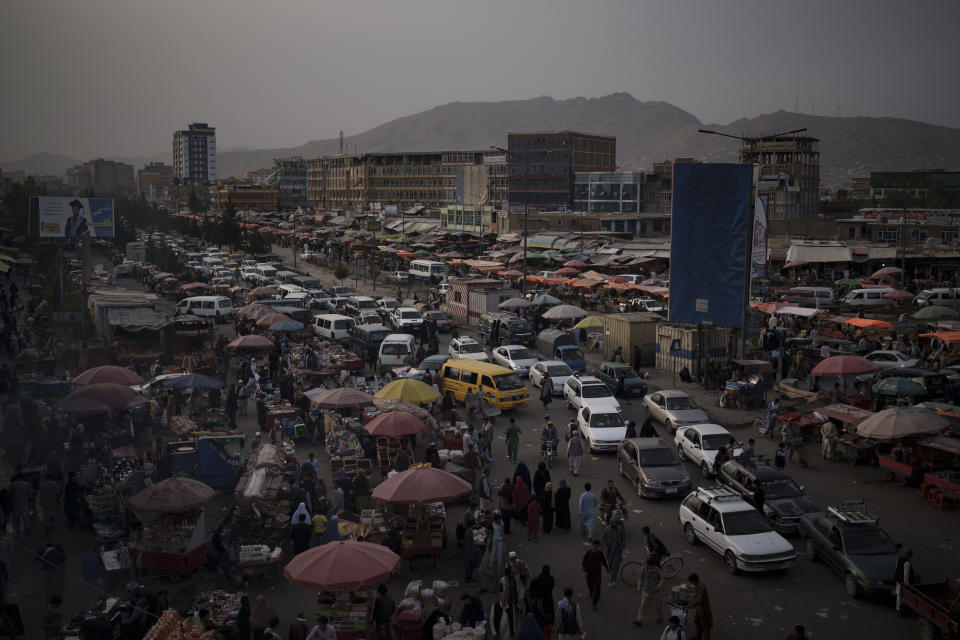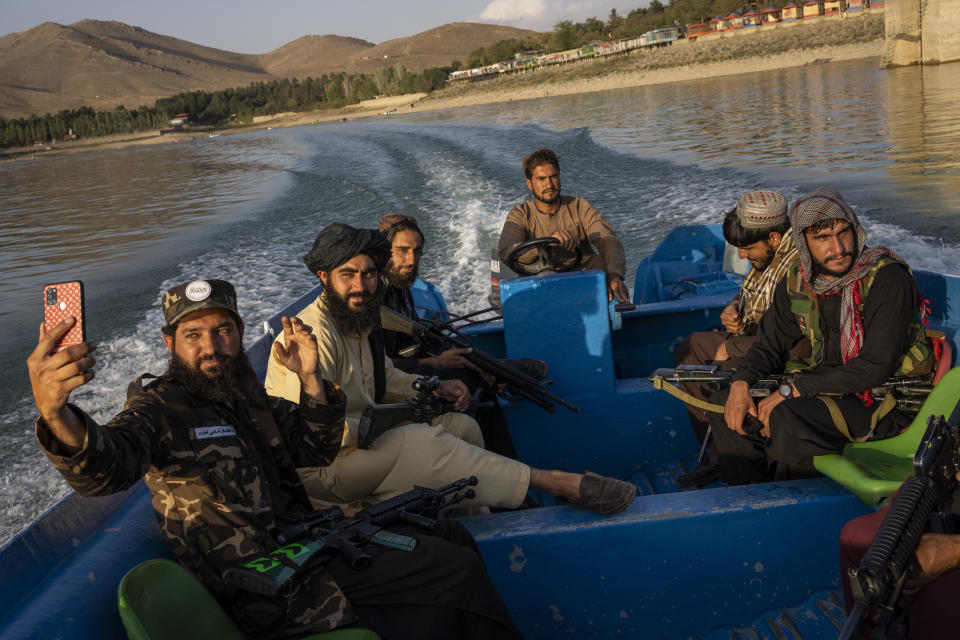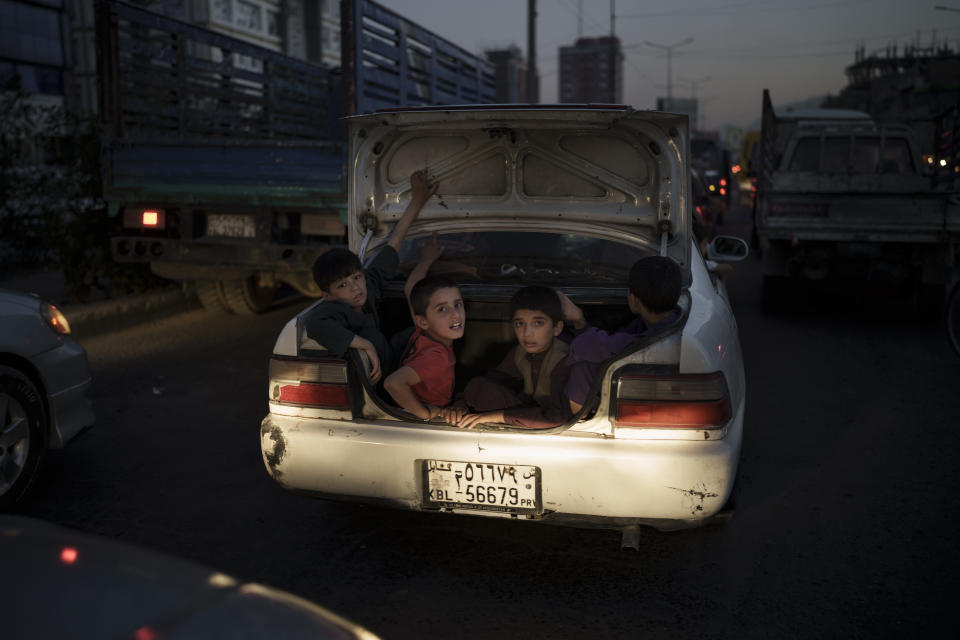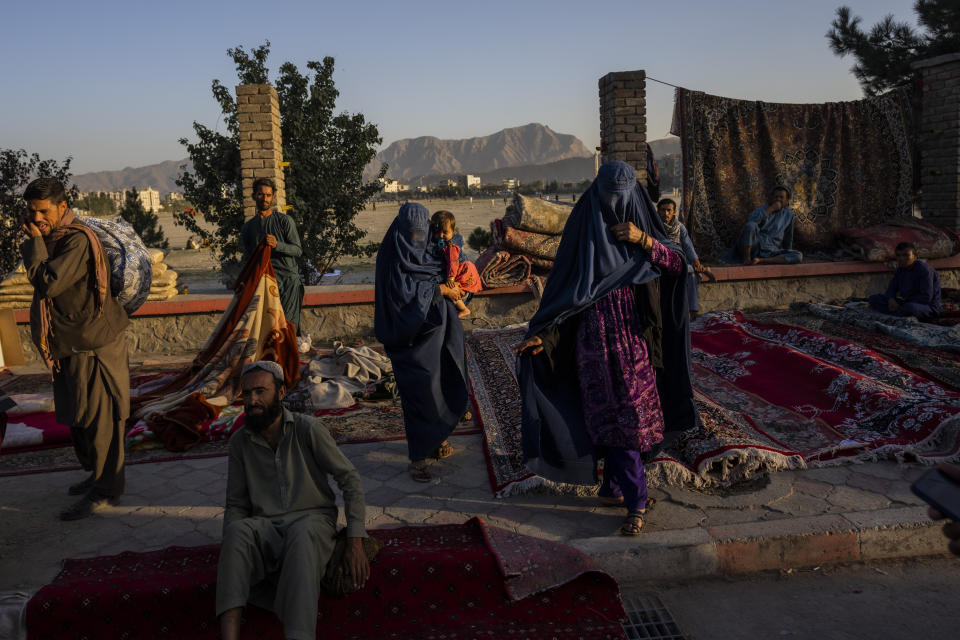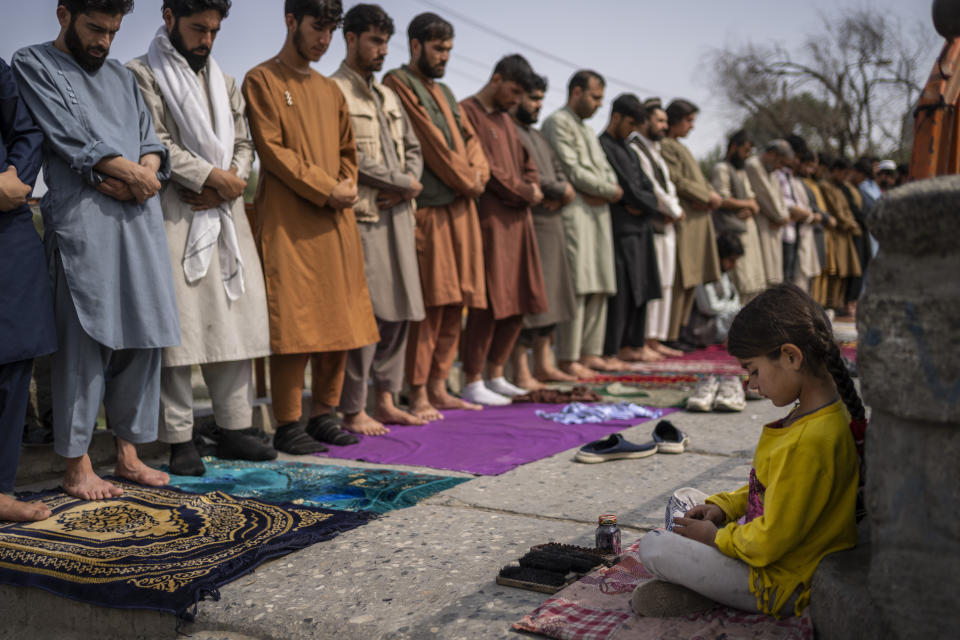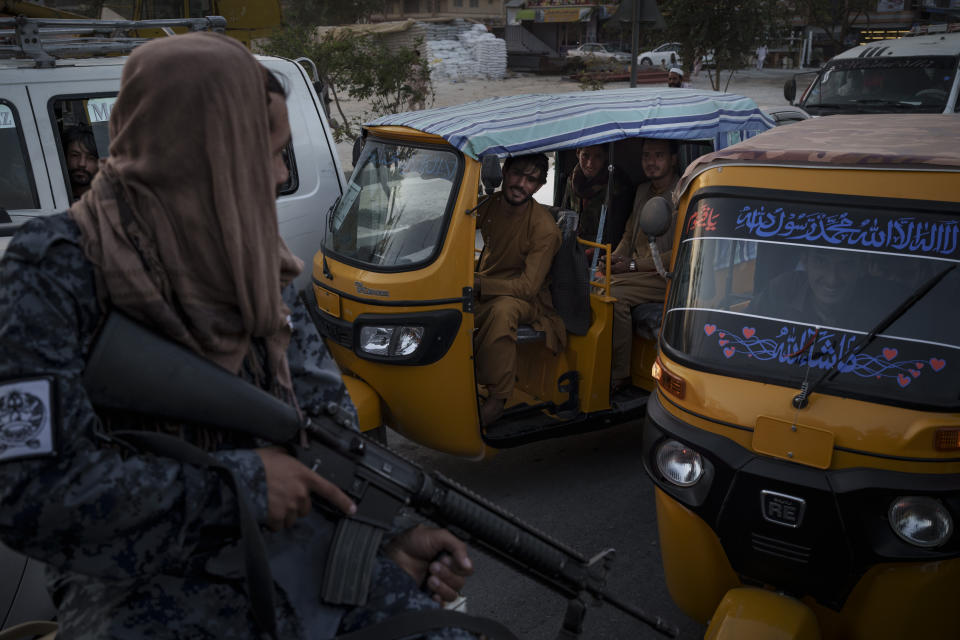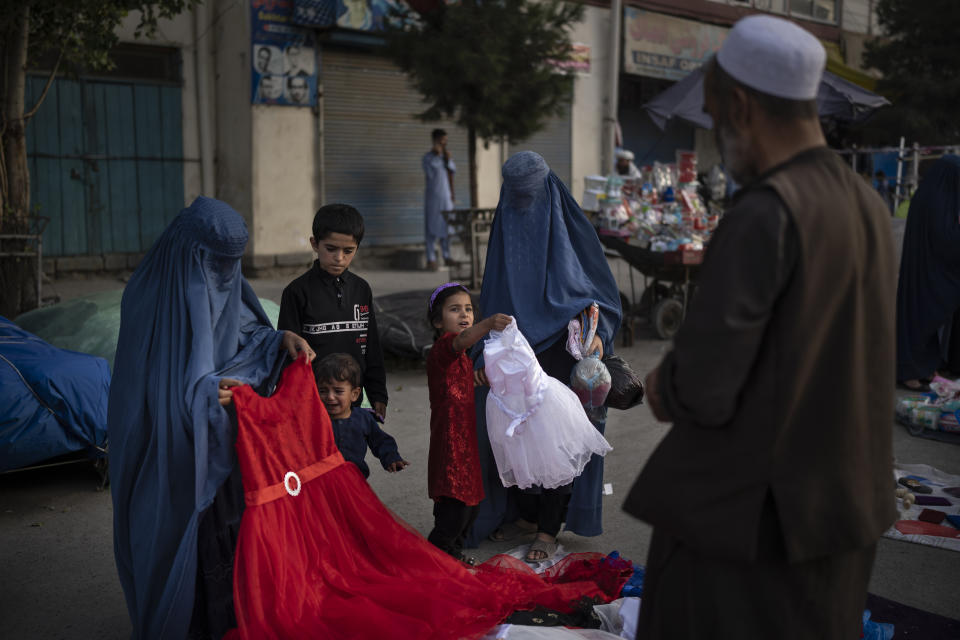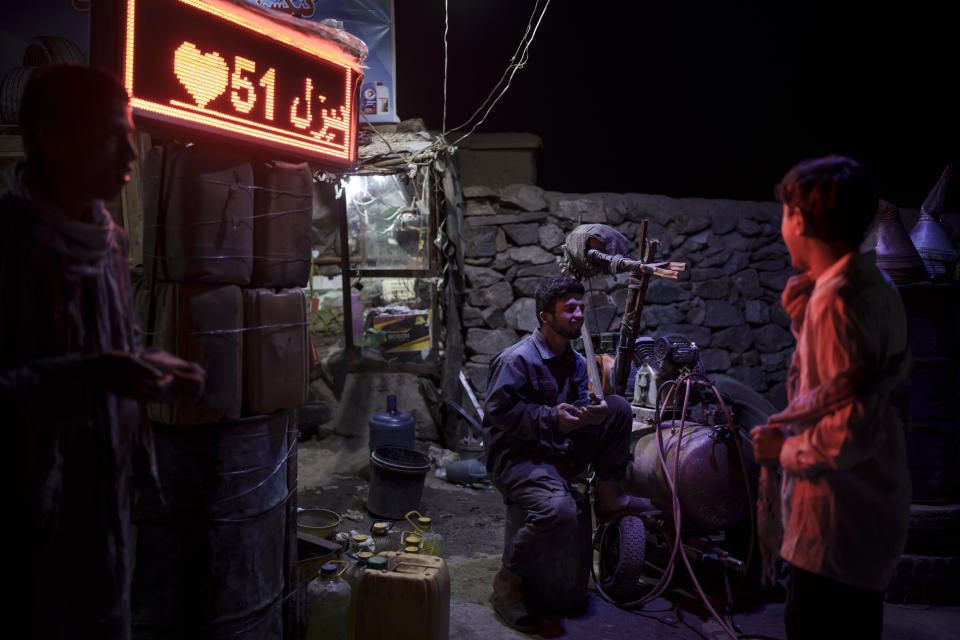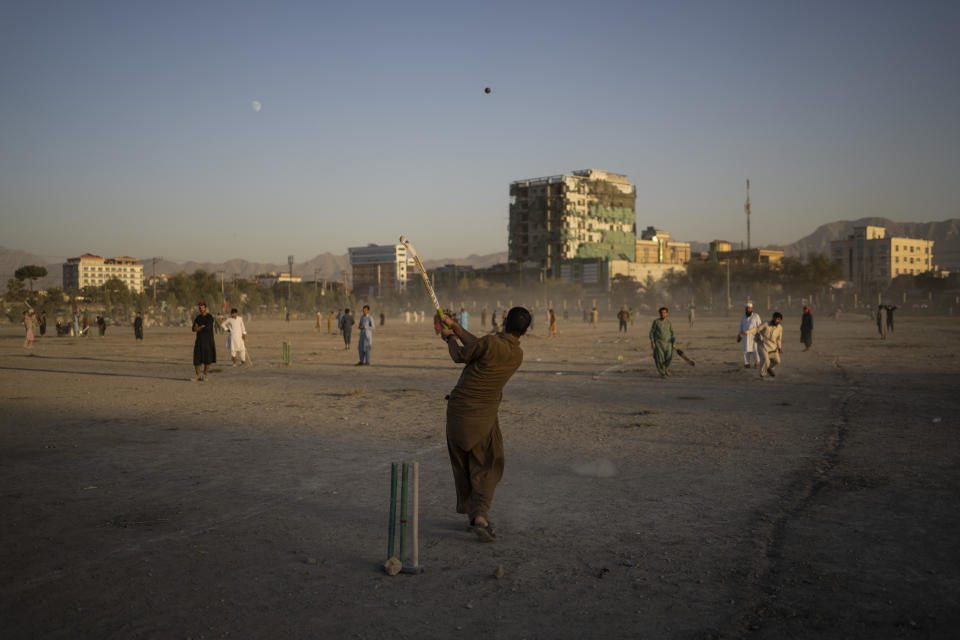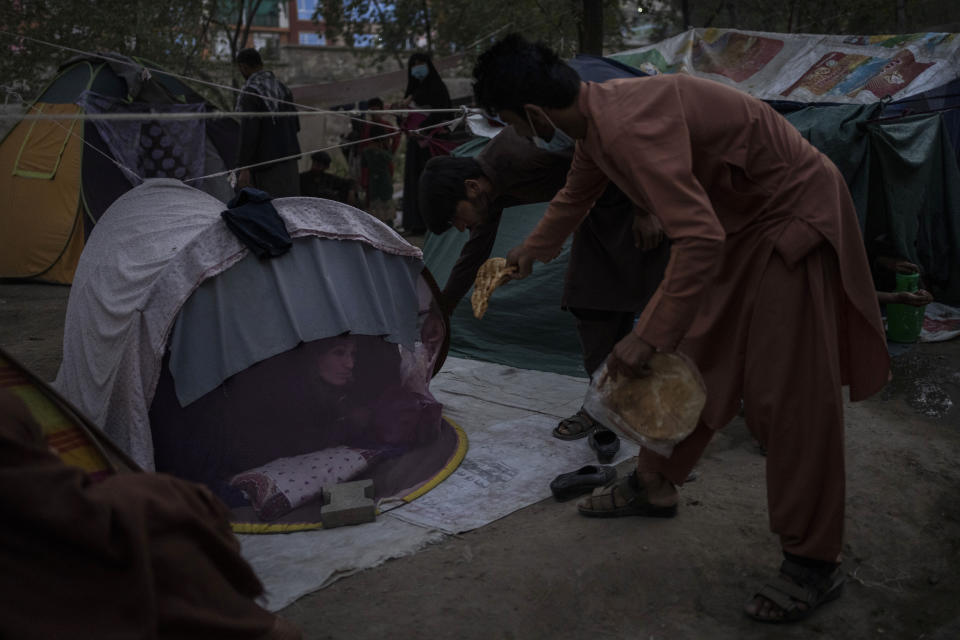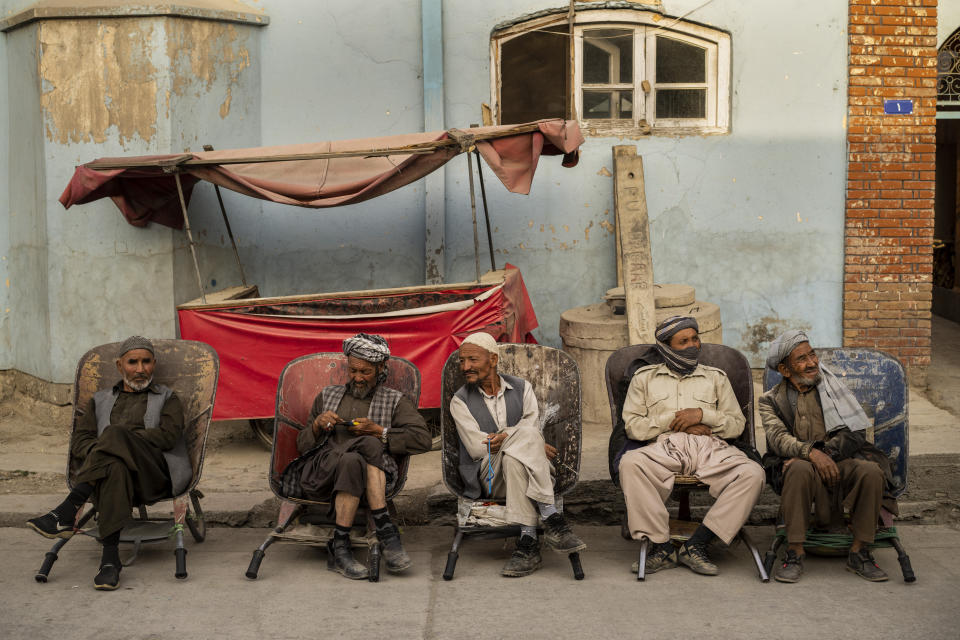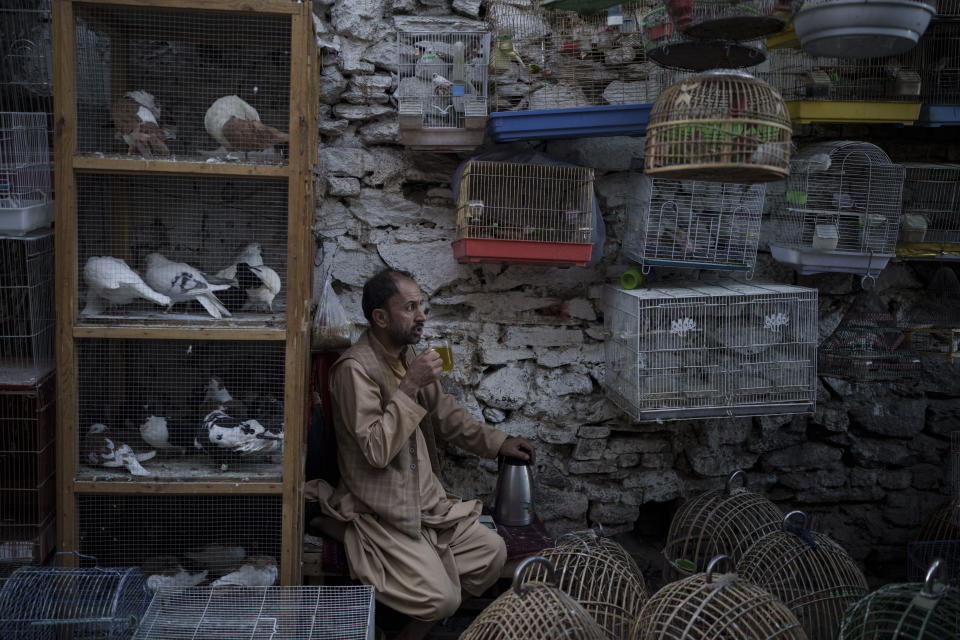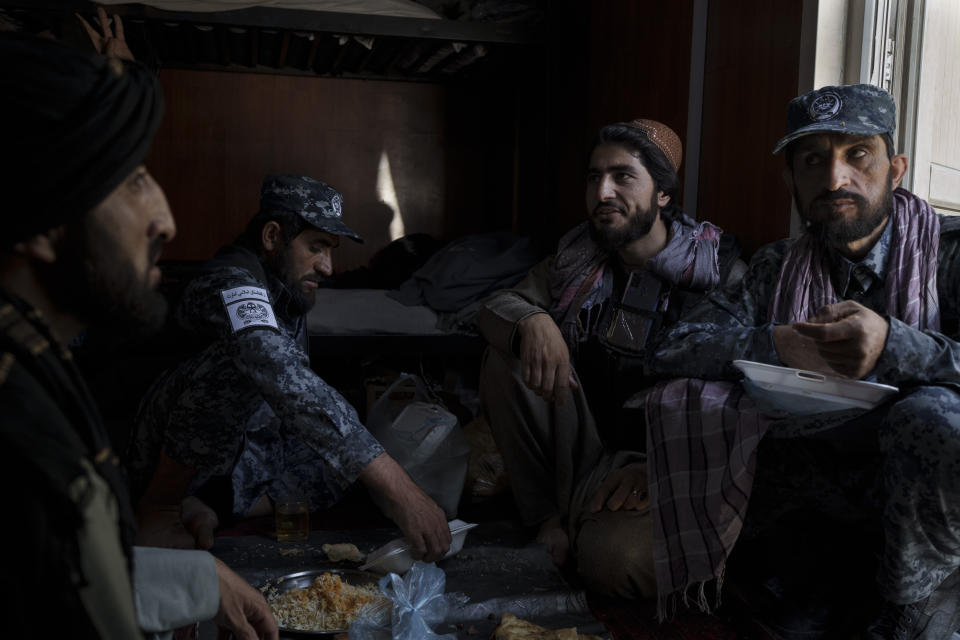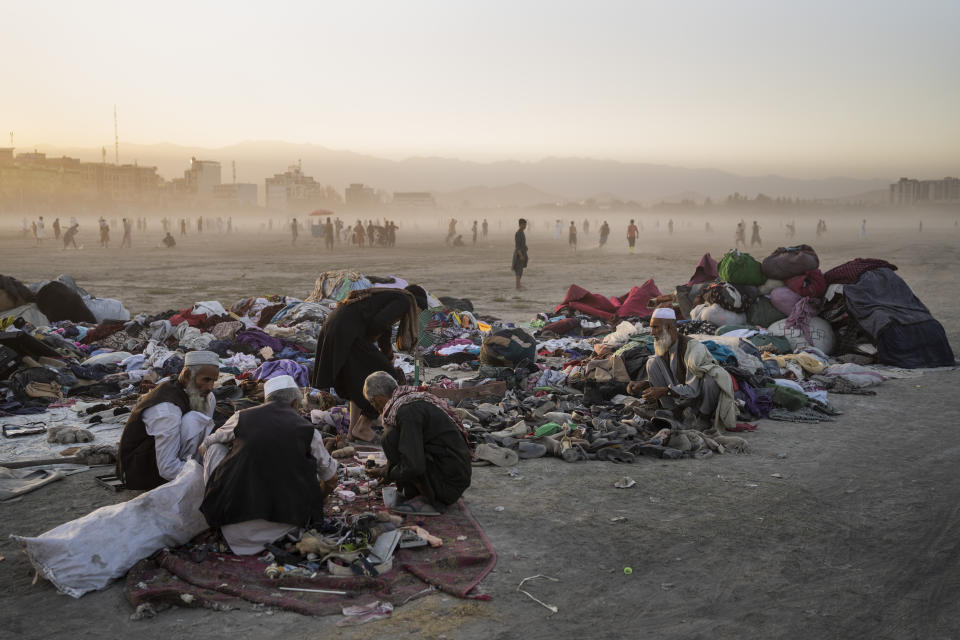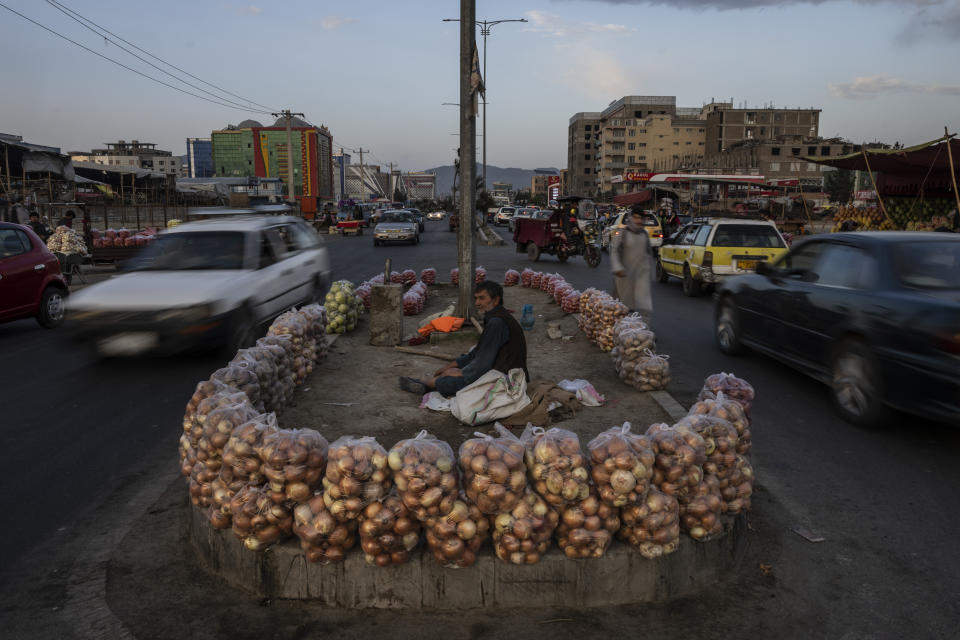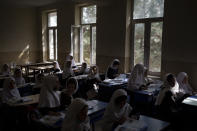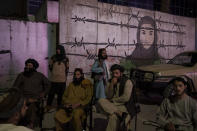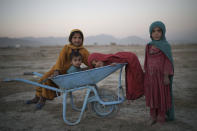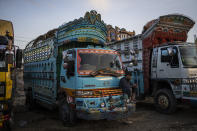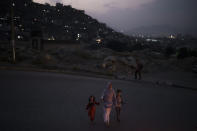AP PHOTOS: Life changing under Taliban, just not all at once
KABUL, Afghanistan (AP) — Life in Kabul has changed in the six weeks since the Taliban swept into the Afghan capital — just not all at once.
Some things that remain the same: Traffic is back to a noisy, congested snarl. The young men still play cricket and watch traditional wrestling matches in the city’s Chaman-e-Hozari Park. Under their previous rule, the Taliban banned many sports, but so far have not done so this time.
Many women seemed to stay off the streets in the days after the Aug. 15 takeover, but in the weeks since, more and more are appearing back in public, some in longer coats and headscarves, some in the all-covering burqa, which has been worn traditionally by many in Afghanistan regardless of the Taliban.
One woman on a recent day passed a row of beauty salons, where some ads on the windows had been defaced or covered to scratch out images of women, but some ads were untouched.
It’s emblematic of the in-between place where Kabul resides for the moment. Will the hard-line Taliban impose the harsh restrictions they did when they ruled in the 1990s, or will there be some margins of flexibility? Photos of all living things, even animals, were banned under their previous rule. So far that hasn't happened, but it is still unknown how far the Taliban themselves have decided to go.
Women are already feeling restrictions. Female employees in the Kabul city government have mostly been told to stay home, and high school girls have not been allowed back to class.
One subtler visual change: Fewer men are seen wearing Western dress. Government employees were the ones who most often wore Western-style clothes, and they have now switched over to the traditional shalwar-kameez combination of long shirt and baggy pants.
The most blaring change is the presence of the Taliban themselves. Taliban fighters directing traffic or manning the many checkpoints have largely put on blue camouflage uniforms, giving them a more official air. But many other fighters wear the shalwar kameez. Most have never been to Kabul in their lives.
On one evening, fighters sat guarding a building where Taliban are being housed. Behind them on the blast walls, an old mural depicted a woman behind barbed wire, originally painted to comment on the harshness of war. On another day, a group of Taliban, cradling their automatic weapons, enjoyed a day boating on a lake near Kabul, talking about how strange life was for them in this city.
Other signs show the growing economic desperation. The economy was already deteriorating before the Taliban came, with more than 55% living below the poverty level. Now after the takeover, it is crumbling fast, with the U.N. warning 97% could be below the poverty level by the end of the year.
Makeshift markets have appeared everywhere, stocked with furniture and household goods as people sell off what they can. At one, women picked around rugs for sale. Another on the fringes of Chaman-e-Hozari Park was poorer, with old men peddling piles of old clothes. Districts with upscale restaurants and shops are emptier. Everyone talks of leaving the country.
At a camp of internally displaced people, food donations are distributed. Soot-covered men working at a brick factory say they are still producing, but fewer people are buying. As men line up for prayers on Friday, a little girl sits in front them, hoping to make some money shining shoes.
As night fell, a woman crossed the street holding the hands of a little girl and boy, the lights of Kabul dotting across the hills behind them.

 Yahoo Finance
Yahoo Finance 